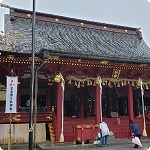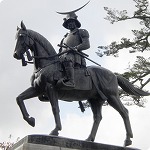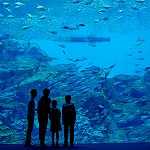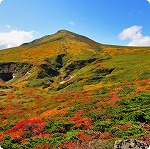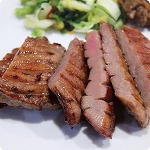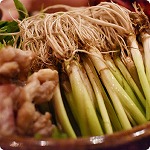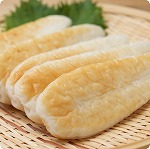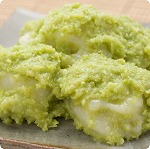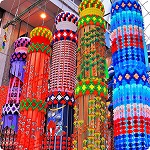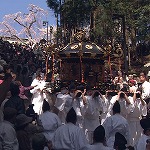
■Miyagi Prefecture
|
Total area 7,282k㎡
Population 2,293,708 people Number of households 1,014,600households Number of municipalities 35municipalities Major cities Sendai City, Ishinomaki City |
Sendai City, with the largest population in the Tohoku region, is a cultural and economic center. Facing the Pacific Ocean to the east, the city is blessed with rich fishing grounds and scenic sightseeing spots such as Matsushima, one of the three most scenic spots in Japan. To the west are the mountains of Zao, Funagata, and Kurikoma, which show their seasonal beauty, and in the center is the Sendai Plain, one of the largest granary areas in Japan. Kinkasan, and off the coast of Sanriku, the Oyashio and Kuroshio currents form the tide line, making it one of the best fishing grounds in the world, which is the reason why Miyagi is known as a fishing prefecture. |
Link:Miyagi Tourism
![]() Tourist Spots/////////////////////////////////////////////////////////////////////////////////////////////////
Tourist Spots/////////////////////////////////////////////////////////////////////////////////////////////////
|
Shiogama Shrine
Officially, there are two shrines, Shihabiko Shrine and Shiogama Shrine. Since ancient times, as a deity that calms the calamities of the Tohoku region and protects the security of the region, and as the most prestigious shrine in Mutsu Province, it was widely worshipped by both the Imperial Court and the people. |
Sendai Castle (Aoba Castle Ruins)
Sendai Castle, also known as Aoba Castle, was the residence of Date’s 620,000 Goku. The castle was built at an elevation of about 130 meters on a natural strategic point with cliffs to the east and south. It is said that the castle tower was not built on purpose to avoid the attention of Shogun Ieyasu. From in front of the statue of the equestrian lord Masamune, you can see the city of Sendai.
|
|
Sendai Umino-Mori Aquarium
It is a “symbolic aquarium for reconstruction” with a large aquarium that recreates the richness of the Sanriku Sea, exhibits unique creatures from around the world, and has one of the largest bleachers in the Tohoku region for dolphin and sea lion performances, animal interaction, and other entertaining activities. |
Mt. Kurikoma
Located at an altitude of 1626 meters in the center of the Tohoku region, it is home to a cluster of 150 species of alpine plants, some of the best mountain foliage in Japan, a virgin forest of the mountain Fagus Crenata, an attractive hot springs, and mountain climbing courses that can be enjoyed by both beginners and advanced climbers. It is also called the Queen of the Ou Mountains. |
![]() Food/////////////////////////////////////////////////////////////////////////////////////////////////
Food/////////////////////////////////////////////////////////////////////////////////////////////////
|
Gyūtan
The standard “beef tongue set meal” consists of a thick slice of grilled beef tongue, barley rice, tail soup, and pickled vegetables. Beef tongue is a healthy food that is low in calories and fat and contains high quality protein. It is a local delicacy of Sendai, grilled carefully piece by piece. |
Seri Nabe
Seri, the seven herbs of spring, play a leading role in this one-pot dish. The best way to eat it is to add chicken or duck to the soup stock made from kombu (kelp) and season it with soy sauce and sugar.
|
![]() Souveniers/////////////////////////////////////////////////////////////////////////////////////////////////
Souveniers/////////////////////////////////////////////////////////////////////////////////////////////////
|
Sasa Kamaboko
It is said that it started when a kamaboko store in Sendai City started selling grilled kamaboko in the shape of a bamboo leaf using flatfish. In the Meiji and Taisho periods, it was called bero kamaboko or palm kamaboko, and in the Showa period (1926-1989), it was called sasa-kamaboko, from the Date family crest “bamboo and sparrow. |
Zunda Mochi
It is a rice cake confectionery made by boiling edamame, peeling off the thin skin, mashing it, and covering it with red bean paste made by mixing sugar and salt. Originally made by rice farmers during the Obon and Higan periods, and sold seasonally at some rice cake and dumpling stores, it has become a Sendai specialty with a rich flavor.
|
![]() Festivals/Events/////////////////////////////////////////////////////////////////////////////////////////////////
Festivals/Events/////////////////////////////////////////////////////////////////////////////////////////////////
|
Sendai Tanabata Festival
This festival has been passed down as a traditional event since the days of Masamune Date, who combines the elegance of the ancient Japanese star festival with the splendor of the decorations. The city of Sendai is decorated with various elaborate Tanabata decorations, including trinkets and electric lights. |
Shiogama Shrine Sail Festival
This festival was started to pray to the goddess Yango for fire suppression and economic recovery. The citizens call it a festival that brings spring, and the procession of 500 attendants adds to the glamour of the festival. The portable shrines descend the 202 stone steps of Omotesando before noon, travel through the city, and return to Omotesando at night. |

